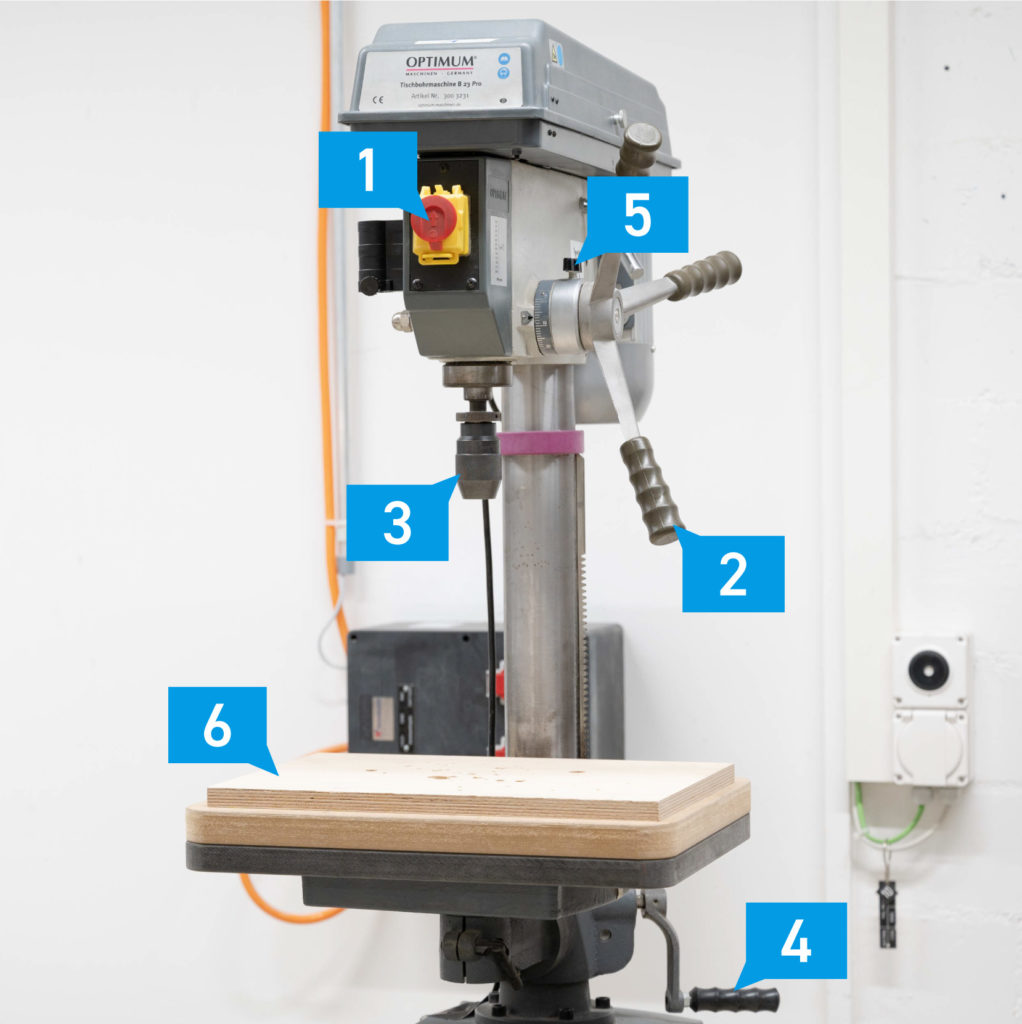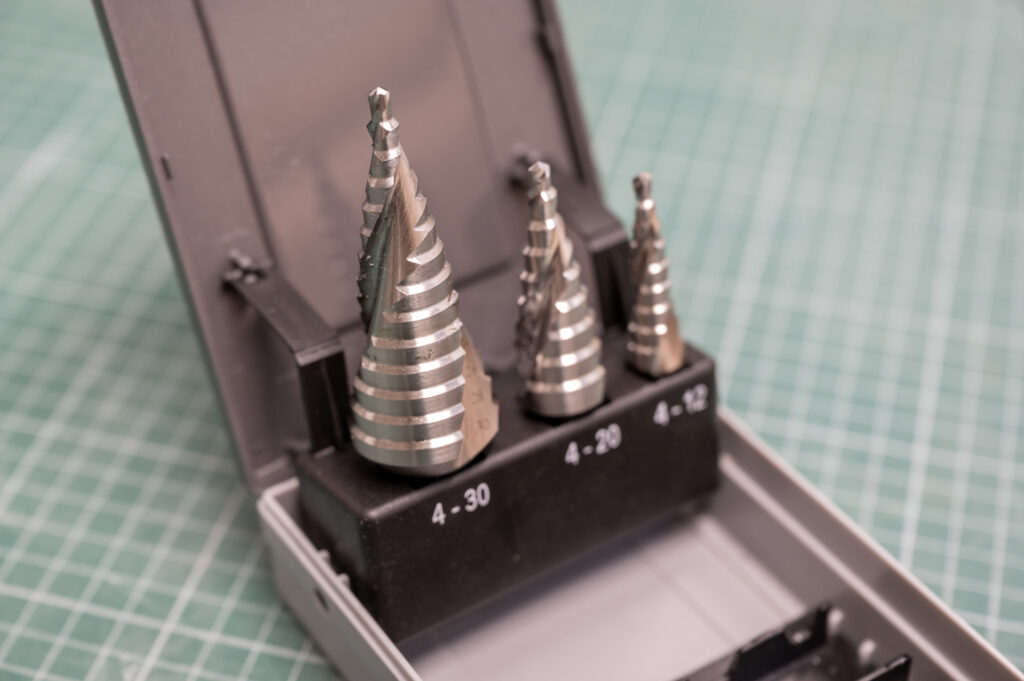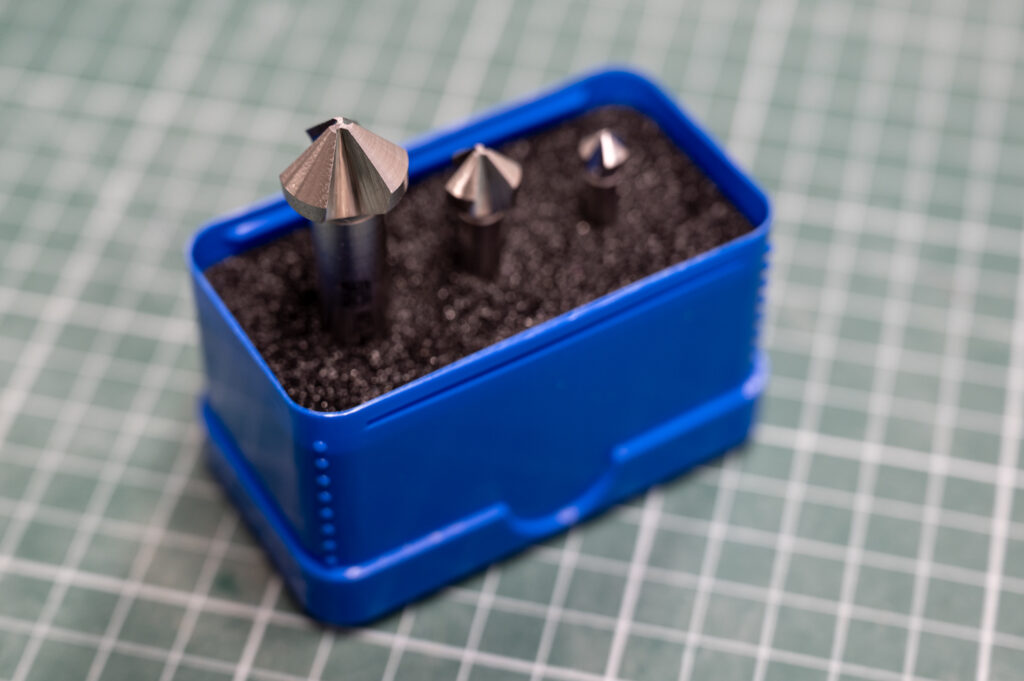The drill press is used to create precise holes in various materials. Our discussion on using the drill press concerns the operation of the machine itself, as well as the large selection of different drills that are used depending on the material, the required diameter, drilling depth, and other factors. To further assess this machine’s potential, it is essential to discuss the types of drills available at the Raplab and highlight their specific application.
The applications for model building are too numerous to list individually. Suffice it to say that whenever you need a precise hole in a specific spot to plant a tree, set a dowel, or create a round opening of sorts, the drill press is the go-to tool.

#1 Power switch
#2 Handle
#3 Drill chuck
#4 Table adjustment
#5 Depth stop
#6 Spoilboard
Metal Drill Bits have a tapered tip without a center point and can be used to machine metals, plastics, and wood. Drilling metals is a potentially dangerous and complex operation that requires in-depth knowledge of cutting geometry, speed, lubrication, and feed rates. Please get in touch with our staff before drilling non-wood materials and ask them for advice on how to proceed safely.
Forstner Drill Bits have good lateral guidance in the material due to the large-surface shape of the peripheral cutting edge and the center point. This drill type provides clean and accurate holes. It is used for drilling wood and derived timber products. Forstner drills are available in a range of diameters from 15 to 50mm, with some specialized diameters (32mm) for installing hinges and other furniture hardware.
Plug Drill Bits are used to make cross-grain repair dowels or plugs for situations where wood defects or installation screws must be hidden. Operating this drill type poses a particular risk of injury and is not permitted without the supervision of a staff member. Standard plug diameters range from 15 to 40mm.
The Hole Saw is used for large diameter holes in wood and aluminum. The tool consists of a center drill, which ensures precise positioning, and a bell-shaped cutter with a saw tooth pattern. Using this tool requires precise control over the RPM and the cutting speed. Don’t hesitate to contact our staff to evaluate if the hole saw is the right tool for your application. Standard diameters for hole saws range from 15 to 90mm.

The Step Drill Bit can be used to make holes in sheet metal. Holes larger than 8mm should not be machined in one step when machining metal. The step drill bit enlarges the hole successively until you arrive at the diameter that you need. For safety reasons, this bit is not freely available; please ask a staff member for further instructions.

The Countersink Bit is used for finishing and fitting screw heads or applying a chamfer to a hole. A properly countersunk hole lets the head of a screw (90° taper head) sit flush with the surface or guarantees clean, defined edges when needed.
The drill press seems to be a simple tool at first glance. Considering the various types of drill bits and their particular application raises the level of complexity of this simple machine considerably.
Standard operations, like drilling holes in wood with bit diameters up to 10mm, are safe if the workpiece is large enough or a work-holding solution like a vise is used to hold the workpiece securely. All larger diameter holes or different materials require specialized setups. Ask our staff for help with drilling none-wood materials and for how to use specialty drill bits (Forstner bits, hole saw, … )